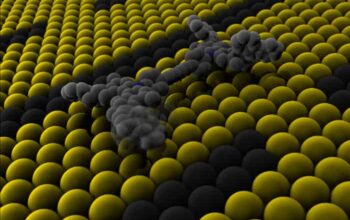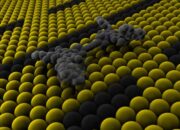The confluence of artificial intelligence (AI), quantum computing, and 3D printing engenders a transformative landscape that prompts both excitement and apprehension. Each of these technologies, rooted in disparate scientific domains, has evolved significantly in its own right. However, when synergistically integrated, they provoke a profound reconsideration of innovation, manufacturing, and even existence itself. This discourse seeks to unravel the multifaceted implications of this triad, addressing a common fascination while hinting at deeper philosophical and practical implications.
Artificial intelligence, a construct embodying computational prowess and machine learning, is characterized by its capacity to process vast datasets and derive intelligent conclusions. It offers efficiency that surpasses human capability, leading to remarkable advancements in various fields from medicine to engineering. The profound potential of AI invites society to reconsider traditional paradigms of labor and creativity. For instance, AI can autonomously generate designs that are meticulously optimized for functionality and aesthetics. However, this autonomy raises ethical dilemmas regarding authorship, creativity, and the future role of the human creator.
Next, we explore quantum computing, a revolutionary paradigm that leverages the principles of quantum mechanics — particularly superposition and entanglement — to perform computations at unprecedented speeds. Unlike classical computers, which rely on binary bits, quantum computers utilize qubits, enabling them to solve complex problems that are intractable for classical computation. This capability could revolutionize fields such as cryptography, materials science, and complex system simulation. The fascination surrounding quantum computing derives not only from its capability to solve problems at an exponential speed but also from the sheer strangeness of quantum mechanics itself. The interplay between AI and quantum computing signifies a groundbreaking frontier, where AI could potentially optimize and enhance quantum algorithms, providing insights that remain elusive even with the most powerful classical systems.
3D printing, or additive manufacturing, serves as a linchpin in this triad. By layering materials to create three-dimensional objects, 3D printing disrupts conventional manufacturing processes. Its advantages — from bespoke production to minimal waste — have transformed industries and democratized creation. The intersection of 3D printing with AI and quantum computing is particularly intriguing. AI can inform design processes, optimizing for specific materials and functionalities, while quantum computing can enhance the simulations and algorithms that govern 3D printing operations. This collaborative dynamic not only streamlines the manufacturing workflow but also accelerates innovation cycles, enabling rapid prototyping of complex and functional designs that were once beyond reach.
When considering the synthesis of these technologies, one cannot ignore the potential ramifications on economic structures and societal norms. The automation fostered by AI threatens to redefine labor markets, leading to potential job displacement, while quantum computing’s capabilities could lead to monopolization of knowledge and technical prowess. Simultaneously, the accessibility of 3D printing holds the promise of giving individuals the tools to innovate independently, thereby augmenting entrepreneurship and potentially leading to a more distributed economic model.
Nonetheless, this triad also beckons a critical examination of ethical considerations. The capabilities of AI can be exploited for malicious intents — misinformation, surveillance, and even autonomous weaponry are but a few examples. Deep learning algorithms can perpetuate biases inherent in training data, leading to systemic injustices. Coupled with quantum computing’s potential to break existing cryptographic codes, the risk posed to privacy and security becomes starkly apparent. Furthermore, 3D printing poses challenges in terms of intellectual property rights; the ability to easily replicate designs may undermine the very foundations of proprietary innovation.
As we probe deeper, we encounter the philosophical implications of the convergence of AI, quantum computing, and 3D printing. This amalgamation invites introspection about the nature of existence, creativity, and the future of humanity. The possibility of machines capable of enhancing their own abilities through AI and quantum computation poses a haunting question: what does it mean to be human in a world increasingly dominated by these intelligent constructs? The artistic domain, too, grapples with these themes. As AI-generated art takes its place in galleries, the distinction between human creativity and machine production blurs, challenging our understanding of authorship and originality.
Moreover, the potential for these technologies to create bespoke solutions tailored to individual needs hints at a paradigm shift in consumerism. Personalized medicine, for example, could emerge from this intersection, where AI analyzes genetic data to inform 3D-printed bioprinted organs, thus redefining healthcare as not merely reactive but profoundly proactive.
In conclusion, the equation of AI + quantum computing + 3D printing transcends mere technological amalgamation; it encapsulates a transformative movement steering humanity towards uncharted territories. The implications expand beyond practical applications to touch upon ethical quandaries and existential inquiries. As society navigates this evolution, it remains imperative to engage in a dialogue that encompasses the myriad dimensions of these technologies, promoting a future where innovation aligns harmoniously with ethical considerations and human values. Addressing the potentialities and pitfalls of such a synthesis will ultimately require collaborative governance, fostering a responsible stewardship of these powerful tools for the benefit of all.










